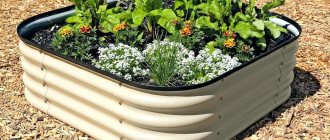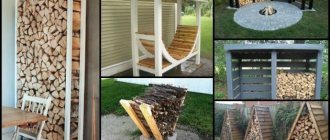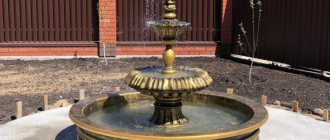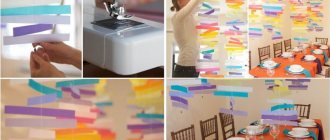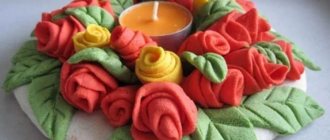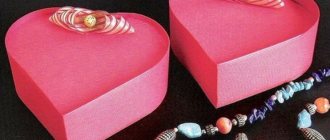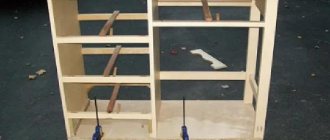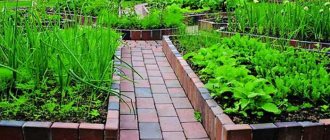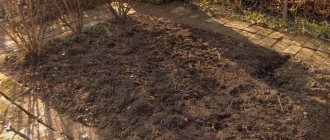Neat and beautiful flower beds are a wonderful decoration of the garden. They can be located in the garden itself, or along the path running from the gate to the house, and also serve as a kind of fence, marking the boundaries of the territory. Depending on the height of the flower beds, their shape, purpose, and your aesthetic preferences, you can use different materials and their combinations for fencing them.
For example, stone, concrete, brick, wood, tile, metal, glass, and ceramics. Recycled items such as dishes, wheels, tires, etc. are also suitable.
Our garden landscaping ideas here will help you gain inspiration and take your garden landscaping to the next level!
Concrete fencing
Concrete and stone fences are often very similar to each other, because an imitation of stone can be made from concrete. Thanks to this, you can make solid fencing walls from concrete, or lay them out from pieces, or make horizontal edgings of flower beds.
Read also the article “Hedges: what to plant?”
Here is one example of the arrangement of such flat stones made of “broken concrete” around the corner of a house.
It draws attention to the plants planted against the background of the wall of the house.
The following example shows how to make a low relief wall from concrete.
This design is very reliable and durable. It can also be painted or decorated in some other way, for example, by laying out a small mosaic.
Do-it-yourself wicker fence: step-by-step manufacturing instructions with photo examples
Not so long ago, wicker fencing was the main way to separate private property. The emphasized antiquity and natural origin of the raw materials allow the wattle fence to organically fit into the countryside landscape. Nowadays, wattle is an original architectural form that is very popular. Wicker fencing can be found on large private properties, dachas, next to gazebos, barbecues, flower beds, gardens, in restaurants and open-air museums. Despite the small number of weaving types, the appearance of the structures can vary greatly. In this article, we will tell you how to make a wicker fence from branches and vines. What types of wicker fencing are there with interesting ideas and photo examples. How to choose a material for a wicker fence with step-by-step instructions for making it yourself.
A fence made of corrugated sheets: how to install it yourself (read more)
Wicker fencing.
Brick fences
Bricks and pavers can be carefully laid around flower beds to create simple, neat patterns.
And here you can see ideas on how and what to decorate a fence at the dacha
For example, place one row horizontally and the other vertically.
And two more similar options:
Or this pattern, made of ordinary bricks. Each piece of the pattern consists of 4 bricks and a decoration in the middle.
As an additional decoration element, you can add lighting along the inside of the brick fence.
Thus, the flowerbed will look wonderful not only during the day, but also at night.
Bricks can also be laid at an angle, as in the next photo. The result is a jagged fence that creates a rustic look.
Flowerbeds can be located on both sides of the path in the garden, and in this case, it will serve as their fence.
To make it more unusual, you can experiment with the shape and make it wavy rather than straight.
And another option with brick:
How to make wattle durable
When exposed to air, dead wood either disintegrates or rots. Therefore, the finished fence is coated with a special varnish (furniture or yacht varnish).
To change the original color of the fence, it is painted with potassium permanganate, bleached with hydrogen peroxide or painted, renewing the color every year.
If painting the fence is not part of your plans, it should be treated with a good antiseptic. The lower part, which is most exposed to moisture, can be additionally treated with vitriol or heated bitumen.
You can also make Swedish paint. To do this you will need (per 10 liters of finished product):
- table salt 250 g;
- rye flour 800 g;
- iron sulfate 400 g;
- drying oil or linseed oil 300 g;
- iron minium 300–600 g;
- water - approximately 6 liters.
Recipe for making paint:
- Bring 2 liters of water to a boil and dissolve table salt and iron sulfate in it.
- In a separate container, rye flour is mixed with water to the consistency of slurry and this mixture is poured into brine.
- Cook for 30 minutes with constant stirring.
- Drying oil is gradually added, after which the broth must be mixed with vigorous movements (an emulsion should form).
- Add red lead dissolved in hot water.
- The resulting concentrate is mixed well again and diluted with water to a volume of 10 liters.
The mixture tinted with red lead will have a golden color. Instead, you can use other alkali-resistant pigments containing iron (umber, ocher, iron oxide mummy). The paint will turn red or brown.
The composition is applied so that approximately 300 ml is spent for every 1 m2. The paint is rubbed in until the pores are filled. The best weather for painting work is calm and cloudy, then the paint dries for a long time and adheres better to the surface.
If the surface to be painted is particularly rough, add more flour to the paint. It acts as a leveling mixture and, thanks to it, paint adheres better to such surfaces.
Swedish paint is not suitable for wood planed to a smooth state.
Metal fencing
Flowerbeds can be planted either at the level of the entire landscape or slightly raising them above it. When making an elevation, it is important that it is strong and secure, and holds the flowerbed in place. A material such as metal will cope with this task wonderfully.
Look, for example, at the following photo, in which a raised flowerbed is protected by a “rusty” metal winding. Simple and beautiful!
And here is another similar option, but here the fence goes in a zigzag, not in waves:
Corrugated steel panels can also be used. When combined with wood they create an interesting and modern design.
Advantages and disadvantages of flower beds in the yard
Fences for flower beds can serve not only as a decorative object, but also as protection for flowers. Before choosing a particular design option, it is important to familiarize yourself with all the possible pros and cons of the design. It is also important that the flower garden looks harmonious against the general background. For example, a certain version of the design may be suitable for a house made of timber, but at the same time it will look ridiculous against the background of a brick building. By choosing the right design option, you can diversify the familiar exterior and attract the attention of guests, neighbors and ordinary passers-by.
Pros:
- Flower stems are protected from lawnmowers.
- High sides and proper design can protect against damage caused by pets.
- Decorative fences for flower beds emphasize the beauty of flowers and make them more noticeable.
- Fenced and more elevated plants are much easier to care for and ensure their normal condition.
- Some materials are easy to get and cost pennies.
- You can realize your creative talent. The original shapes and patterns attract with their unusualness.
Decorative border Source derevyannyy.com
Cons
- Fencing flower beds takes up a lot of usable space.
- From time to time the structure needs to be monitored and taken care of on time.
- Some materials require large financial investments.
- It is very difficult to independently choose a flower planting scheme and a form of fencing construction.
Stone fences
Stone is a very popular material for edging flower beds as it gives them a natural and natural look. Stones have many shapes, sizes, colors, and also differ in appearance and texture. This allows you to use whole stones for construction, or trimmed ones, as well as their combination for the desired result.
Gabion fencing
Gabion is great for fencing flower beds. It looks natural, yet structured, and blends well with the environment. It is also strong, reliable and durable.
The metal cage can be divided into sections (for example, by wooden partitions, as in the first example), or be integral. The size of the stones for filling the gabion and their shape can be very diverse, the main thing is that they do not fall out through the checkered fence.
Stacked Flat Edged Stones
One simple way to fence a flower bed is to use flat edged stones, laid out on top of each other around the flower bed in several layers.
Small pebbles
A small stone border can separate both a flowerbed and a lawn and a house and a lawn. To do this, you need to make a small depression along the border and fill it with small pebbles.
Packing crushed stone between bricks
This lawn fencing idea provides contrast with the brick and wide strip of crushed stones.
Here is another example of this use of small pebbles:
Here, pebbles of different colors were used to enhance the contrast of the border.
Stones combined with bricks
This fencing of smooth stones and bricks gives a very natural, not too “flawless” look. As you can see, there are no complicated instructions for installing rock landscaping, other than the fact that each stone will need to be lifted and put into place, and this requires a certain amount of physical strength.
Using stones of different sizes provides great contrast. Small stones create a nice transition border, while large stones form the main border and keep the flower bed raised slightly above the level of the lawn.
It is also possible to combine stones with sand, in which case it is as if you are creating a small piece of the beach in your garden.
And a few more options with stone:
And even marble:
Types of homemade fencing for flower beds
We propose to consider the most popular fences for flower beds with your own hands from scrap materials, which are very easy to create with your own hands.
From stones
The most popular border for a flower bed using improvised means is made of stones.
At the first stage of creation, the layout and height of the fence are determined. Then the foundation is prepared (if a tall structure is planned). Along the contour of the flower bed, they dig a trench 30 cm deep and a width corresponding to the size of the stones. Then the ditch is waterproofed using polyethylene, then concrete is poured and left to dry. Low, beautiful fences for flower beds with your own hands do not require pouring a foundation.
The next stage is laying the stone with fastening using thick cement mortar. To ensure the process is carried out smoothly, use a building level.
You can also check out “Original do-it-yourself flower bed made of stones”
Wooden fence for flower beds
Miniature fences made of wooden materials look beautiful on the territory.
Wooden boards fit harmoniously into the design of flower beds
A variety of boards, plinths, platbands or various types of wood materials are suitable for creation; they will organically complement medium-sized crops.
Process of creation:
- We decide on the height, mark it on the base, and saw off boards of identical sizes.
- In order for the workpieces to be conveniently fixed to the ground, an acute angle is made on one side, while the top is left straight.
- The prepared pegs are dug or driven into the ground 5-10 cm so that they are as strong as possible. The average height of the workpiece is 35 cm.
The advantage of such a fence is its original shape. But to achieve the perfect result, you will need to use a level to set the line as straight as possible.
Plastic fences for flower beds
The advantage of a garden plastic fence is that you can reproduce different original shapes on your site.
You can also build borders using plastic bottles. They can be painted in multi-colored colors or covered with plain paint. After this, sand is poured into the bottles so that they do not deform from exposure to high temperatures. Then they are placed in the ground according to the invented scheme or arrangement of plants.
Metal fencing for flower beds
Forged or stamped fences will work well here.
If you decide to create a metal fence with your own hands, then pay attention to the old pipes that are welded together. You can use unnecessary bicycle frames or wheels. A corrugated sheet of metal cut into strips is also suitable as a fence.
Glass fencing options
Beautiful fencing for flower beds can be easily created with your own hands from glass bottles.
To do this, prepare empty bottles of champagne, wine or beer. The creation process is very simple - collect the required number of containers (for example, for a medium-sized plot, 20-25 pieces will do). After this, dig a low hole and stick the bottles in there so that the neck is in the ground. To create a beautiful horizontal line, use a building level.
Vine
This type of fence looks very elegant, and its creation does not take much time. To make fences, use the following diagram:
- Drive base stakes into the ground at a distance of 10-20 cm, and cover the space between them with vines.
- To make the fence stable, secure it with fishing line. The height of the structure depends on the number of rows located.
Such structures are harmoniously combined with various landscape styles, and if you treat the surface with paint, you can significantly extend the service life of the products.
Slate
Slate is durable, and thanks to its wave shape, it allows you to create an original garden design.
To build the structure, the slate is first cut into 2 parts. For this it is better to use a grinder. According to the contours of the flower bed, they dig a small narrow groove and place the slate plates made there. Then they are sprinkled with soil, and small, inconspicuous pegs are installed to strengthen them.
Fencing made from old plates
Do-it-yourself small fences for flower beds are made from old dishes. Unnecessary saucers will be a wonderful addition to the flower garden. To decorate the area, simply stick the plates into the soil or cement solution. The advantage of this solution is simplicity, long service life, and unusual design.
Having learned how to make beautiful fences for flower beds with your own hands, you will be able to complement the garden with original fences, zone the space, and protect the plants.
Wooden fences
Wood, like brick and stone, comes in many forms. The most common type of fencing is the raised garden bed, but as you'll see, there are many more types!
Horizontal wooden beams
The beams are placed at angles to the fence and only one plant is planted in each “growing zone”. Also used here is a combination with decoration with small pebbles.
Vertical wooden beams
Such beams, cut to different lengths, make the fence a little chaotic and give it uniqueness.
Here's another example where the beams are already aligned to the same length:
You can also add original decorations, such as “stone legs”, or anything else interesting that you want!
Small fence
Fencing a flower bed in the form of a miniature fence is very simple to do, but it looks interesting and funny. The boards can be simply varnished, painted plain, or a combination of different colors. The fence can be smooth, or consist of boards of different lengths.
Or here’s another example of a small fence made from old pallets:
Chopped trees
Wood can be used as a fence even in its most natural form, that is, using tree trunks or their thick branches.
And a few more options for using wood:
Stone - beautiful, solid, original
As an interesting material for creating a decorative fence, you can use ordinary rubble (broken brick) and construction mesh. This solution looks interesting. The work is carried out as follows:
- First, the mesh is cut into pieces of the required length and height. It is advisable to make decorative fencing no higher than 35 cm.
- Then, along the perimeter of the flower garden or flower bed, sections of mesh are driven or dug into the ground.
- Having retreated about 15-20 cm from it, install another similar piece of mesh. The master should create a kind of channel.
- Its emptiness is filled with rubble. The stone is laid as tightly as possible.
Now all that remains is to cover the decorative fence with new pieces of mesh. It can be welded at the corners or seams or simply fastened with pieces of metal wire.
Decorative stone fence
You can make an interesting fence from large plate-like pieces of natural stone. The work is done like this:
Decorative stone fence
- Along the perimeter of the flower bed, remove soil to a depth of approximately 10-15 centimeters.
- The bottom of the trench is compacted and covered with a layer of sand of about 5 cm. It is also well compacted.
- Now prepare a solution of sand and cement in a ratio of 3:1.
- The stones are first laid in one layer, coating the joints with a building mixture.
- Then the fence is built to a height similar to brickwork.
The rows may turn out uneven. But it's not scary. You can only select each subsequent stone according to thickness, shape, size. Ideally, the master should create an interesting fence approximately 25-30 cm high.
Interesting: We create a rock garden ourselves
Remains of paving slabs
If you really want to make a beautiful fence for a flower garden from scrap materials, you can also use blocks of tiles if they are left over after installation. Rectangular options laid at an angle will look especially good. That is, the fence looks like fallen dominoes, previously lined up in a row. Moreover, the tiles can be laid either on edge or with their back/front sides facing each other. When mounted on an edge, the consumption of blocks is more economical.
Tip: before installing a tile fence, prepare a small trench 5-7 cm deep for it. Its bottom should be filled with sand and compacted well. Laying tiles can be done without cement.
Wicker fences
These fences are the true embodiment of rustic style, and are made mainly from wicker.
But it is also possible to weave a fence using old hoses.
Other fencing materials
We have already considered the main materials, so finally we offer ideas for fencing made from unnecessary items found at home.
